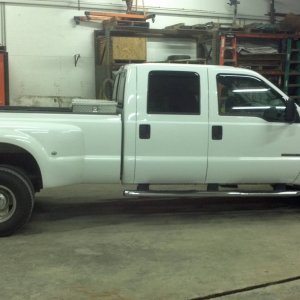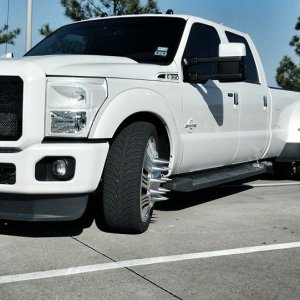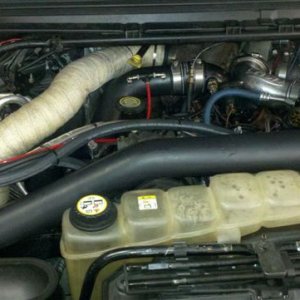The idle fueling and overall fueling would just need to be changed for the hybrids. Put a chip in a hybrid injector truck that is tuned for 160cc AC codes and see how pitiful it runs. The 200cc hybrids require way more fuel and ICP just to get the truck to move. I tested this on 3 different trucks and was amazed at how the truck responded.
Jody
That makes no sense. If it's an unmodified AC, then we're talking stock 7 hole nozzle?
You pair a program written to make a set of AC's fiesty with a set of hybrid injectors running 200% nozzles and things are going to be very, very snappy, smokey and touchy.
Just the opposite of what you seem to have found. In fact, while many programs for an AC might be running 3 or more ms of pulsewidth (sometimes double that or more) a mere 1.5ms or so on a 200% nozzled hybrid would be leaving the AC injectored truck in the dust.
A hybrid with a 200% nozzle as is being described in this thread takes far less pw than an AC injector to perform the same tasks. Part throttle and off-idle fuel would have to be pulled back substantially to keep the truck from bucking and jumping with throttle application if nothing else were changed but a swap from an AC to a 200% nozzled hybrid. The cruise control would probably be rendered useless until such a change was made.
Now if they were both running identical nozzles, then it might make more sense. But who in the hell runs a stock 7 holer on a hybrid? There would be no point. The whole point of the hybrid is to sway the oil flow rates toward a more manageable value for a given fuel flow rate. With a stock 7 holer an A-code P&B is not over-taxing the poppet valve's ability to flow rotella anyway.
One thing that should be said, is that the flow vs pressure graph for an A-code with a competitively sized nozzle (200+) is very flat. They flow very little additional fuel with additional ICP. It's because as the ICP rises, it only worsens the intensifier pistons rate of drop, further amplifying the deficiency of the poppet valve to fill the void it's creating because of the rapid drop needed to keep up with the nozzle flow while using such a tiny plunger diameter.
The hybrid on the other hand will increase flow much more sharply with increases in ICP. This is because as the ICP is increased the increase to the rate of drop for the intensifier piston is still in a range where the poppet valve can better keep up with the additional demand. So you get greater changes to injection quantity for a given increase in ICP when compared to an A-code.
This is one reason why people that lower ICP down low might find an equally nozzled hybrid to be a bit lax at these points in comparison. It's because down there, the A-code is finally dropping to an injection rate point where it's not just horrendously overruning the poppet valve, so it offsets the drop in ICP with a rise in internal efficiency. Basically negating the ICP drop, making the truck react much, much less to ICP changes.
The hybrid on the other hand actually drops a lot of fuel for a given drop in ICP, because it wasn't nearly as bad off to begin with. So when you drop the pressure it actually starts dropping flow right along with it.
If you graphed the injection quantity vs ICP at any given pw for an A-code vs a Hybrid, both running say a 200% nozzle on each, the plot for the A-code would be very shallow in comparison.
That is the only thing that might account for your findings. But that would require the hybrid to have a tiny nozzle on it in order to show that compared to an AC with a stock nozzle.












